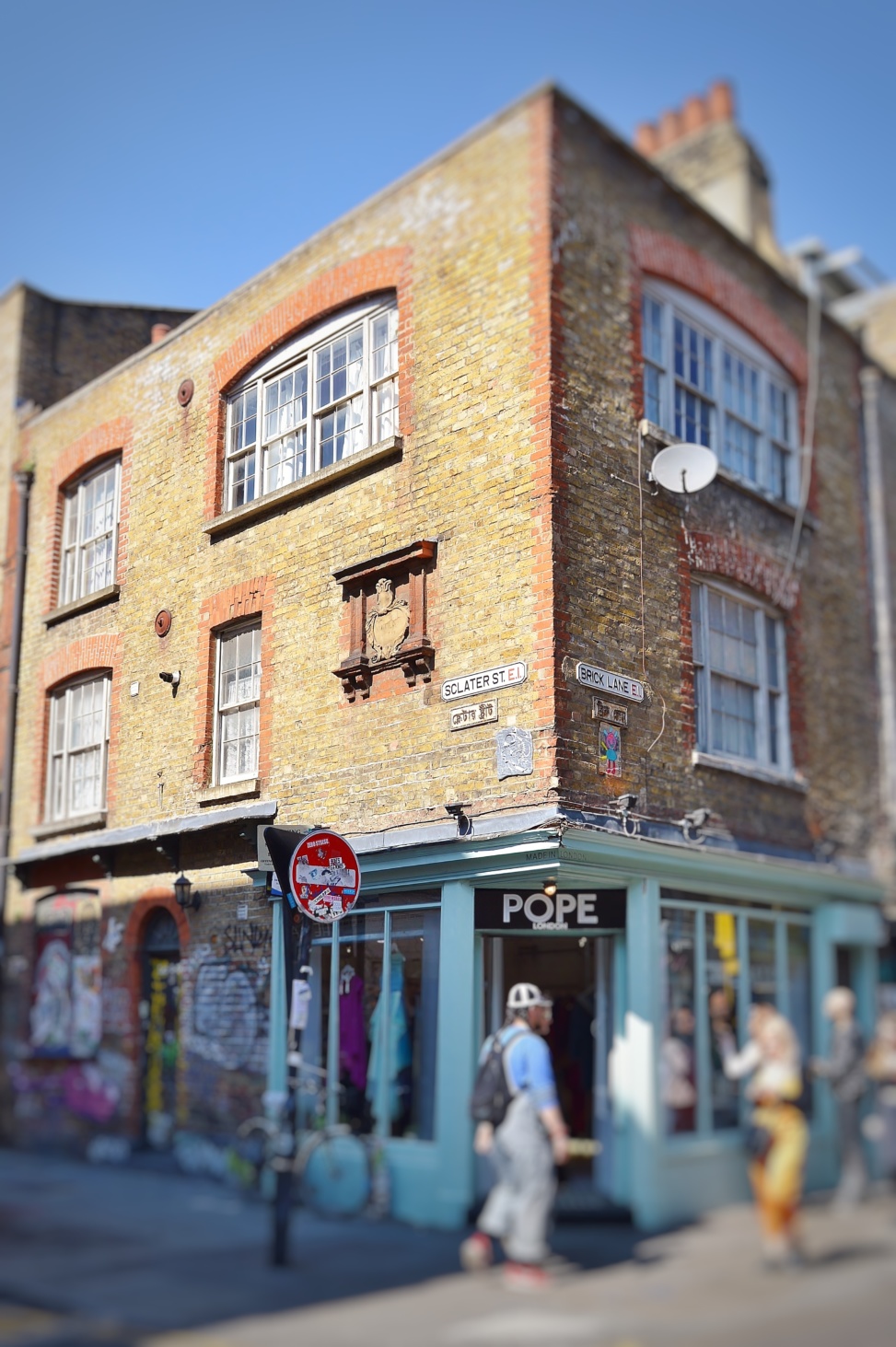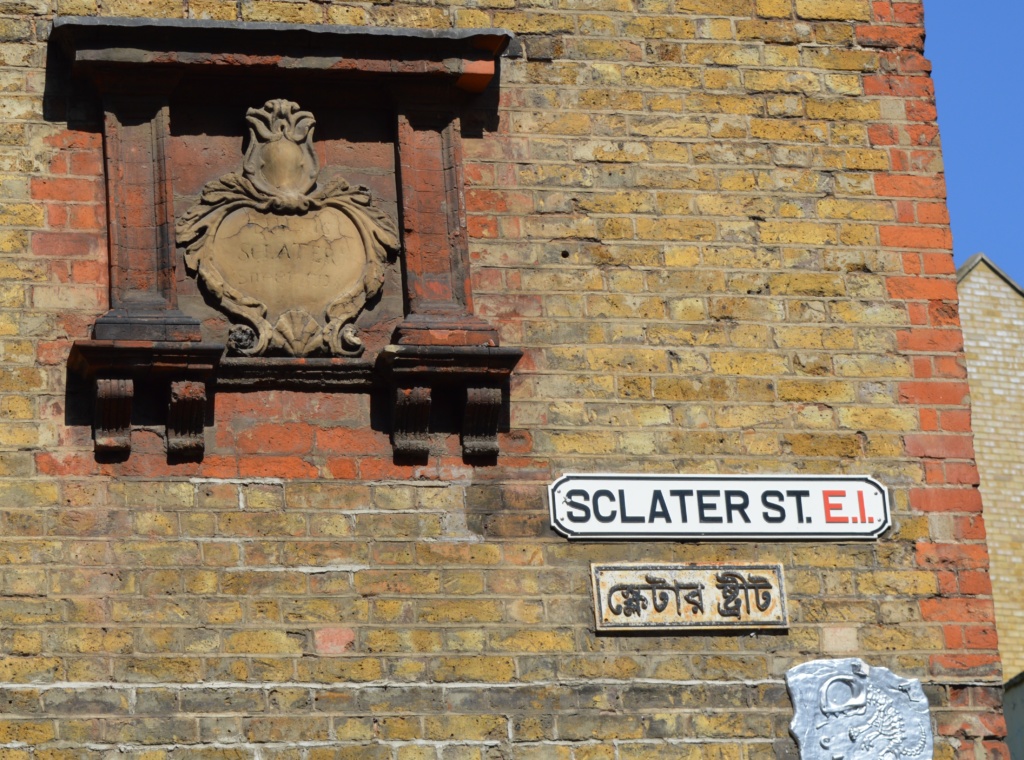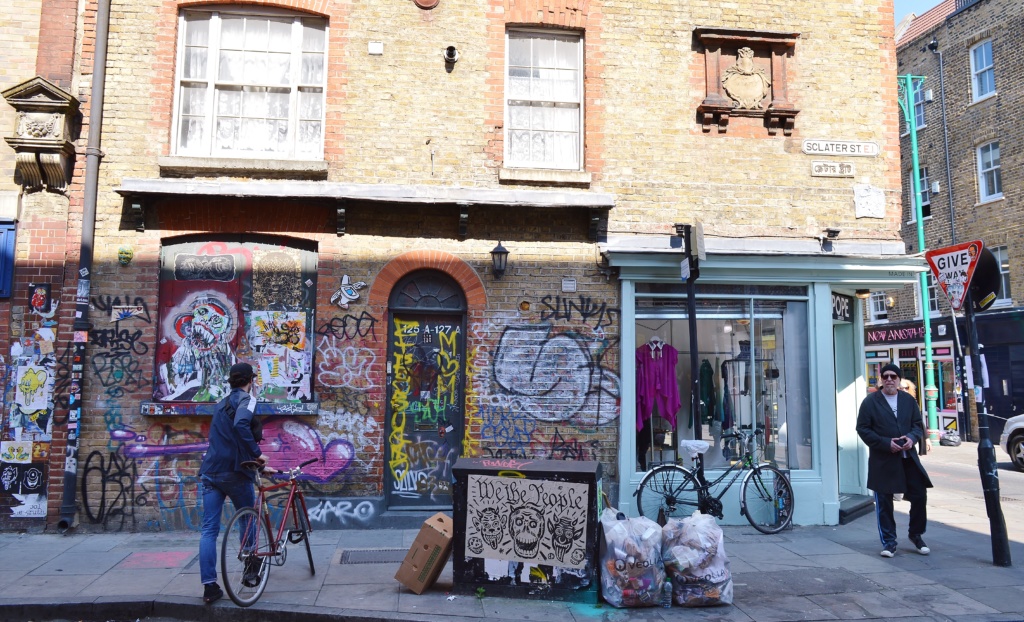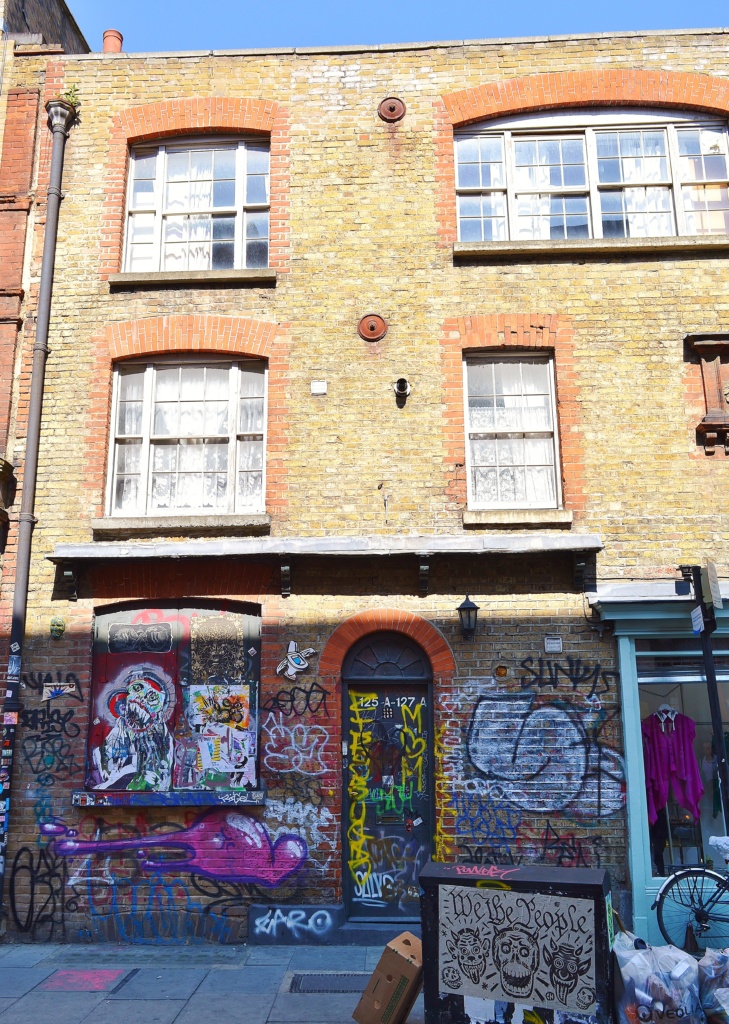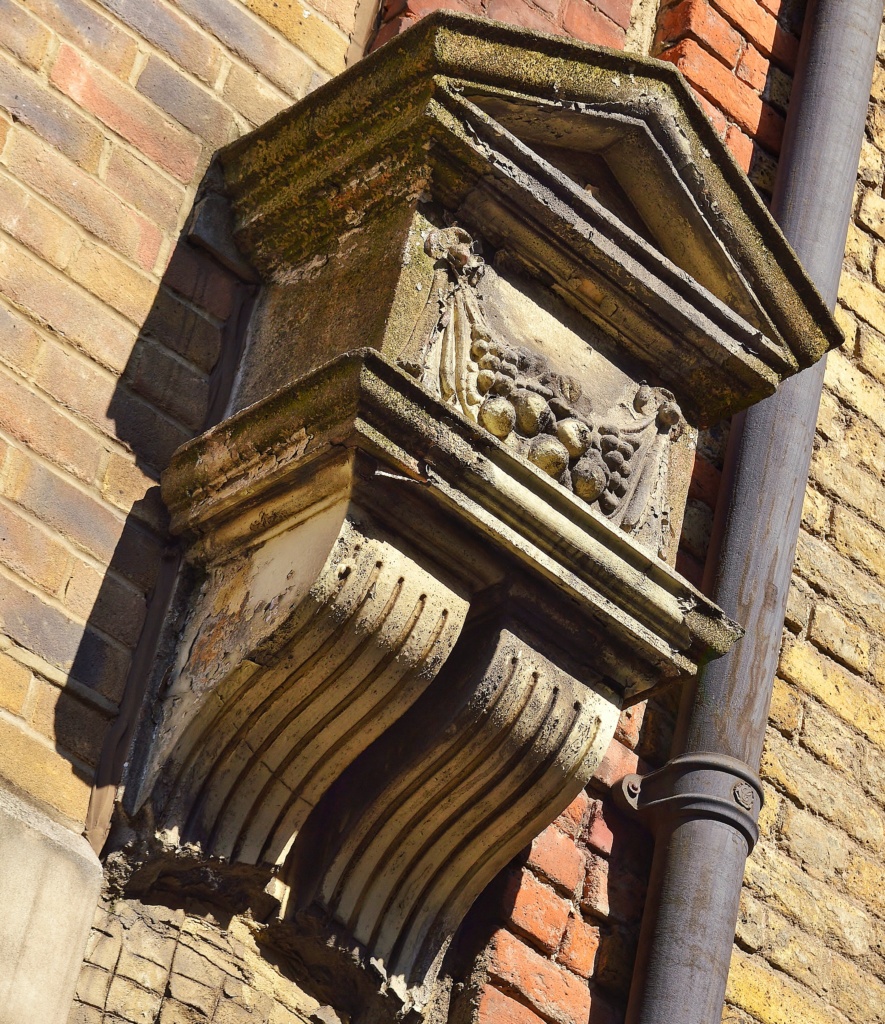Look at the modest Georgian splendour of this building at the intersection of Sclater Street and Brick Lane. It was a mixed use development built in the eighteenth century by a distiller who would make and sell Mother’s Ruin – i.e. gin – on the premises and also rent out living space and weaving workshops above street level to get a little extra return on his investment. These distilleries sprang up across London after the Glorious Revolution of 1688 when the Protestant – originally from the Netherlands – King William of Orange promoted the manufacture of the traditionally Dutch tipple of gin (origin of “Dutch Courage”) to replace French brandy whilst we were at war with the French. The British took to the new drink too well. By the mid-eighteenth century there was a gin epidemic, which Hogarth charicatured in his Gin Lane, and the government had to introduce laws to control the production and consumption of the spirit.
The shop is still in use, albeit now a fancy fashion boutique called Pope (a sign of the increasing gentrification of the area), and there remain doorways on Sclater Street and Brick Lane that lead up to the rooms above. A satellite dish attached to the front of the building, to catch digital television programmes from the air and relay them within, suggests there is some sort of life up there. Unfortunately it has been visited by one or more of those knuckle dragging narcissists with spray paint cans and the ground floor of the Sclater Street side of the building has been substantially defaced by grafitti.
Sclater Street hosted a market that traded in live animals, particularly birds until well into the twentieth century; the last live animal traded was in the 1980’s when an RSPCA led campaign highlighted the poor condition of many of the animals on the market and successfully closed it down.
Moseley and his black shirts held fascist meetings on this corner in the 1930’s as they tried to whip up conflict and fear in what was then a predominantly Jewish area. Battles were fought up and down Brick Lane; Cable Street, site of the biggest confrontation of them all, is not far away.
Now the the area has a strong flavour of Bangladesh – some of the street signs have a Bengali translations here including Sclater Street in this picture – and Brick Lane is famous for curry as well as Jewish bagels. Monica Ali captured the area in her book Brick Lane in 2003. This is visibly changing, however, as the streets gentrify and Brick Lane becomes the sort of “off beat” tourist area where people wander with cameras tied round their necks, eating ice creams and holding hands while gawping at the remnants of hippie culture, (expensive) boutique coffee shops and creative types with attendant piercings and tattoos. No doubt the Bengali community will disappear from the area one day just as the local distilleries and the East End Jews have also left this stage.
Dan Cruickshank, one of London’s great historians noticed this building and provided more details:
“Numbers 125 and 127 Brick lane on the north-west corner of Sclater Street are the best preserved of the early buildings on the estate. Affixed to 125 is an ornate, and somewhat Baroque, nameplate inscribed “This is Sclater Street” along with a date, very weathered, that could be 1718 (in which case it has come from another house and probably relates to the founding of the street) but is usually interpreted at 1778. The house itself is a remarkable survival, built as a mixed use block, and no doubt for multi-occupation. It’s now three stories high but a watercolour of 1914 by E. A. Phipson now in the London Metropolitan Archives shows that the building was originally four storeys high above ground. The upper floor windows are generally wide, while the now lost top floor was furnished with a continuous window – comprising four sashes in a row – looking onto Brick Lane. The house was probably built for Daniel Delacourt, a distiller, in c.1778 replacing one built in c.1718, and its original mix of uses included a shop, weaving workshops and tenements that could be sublet”
Spitalfields 2000 Years Of English History In One Neighbourhood by Dan Cruickshank
